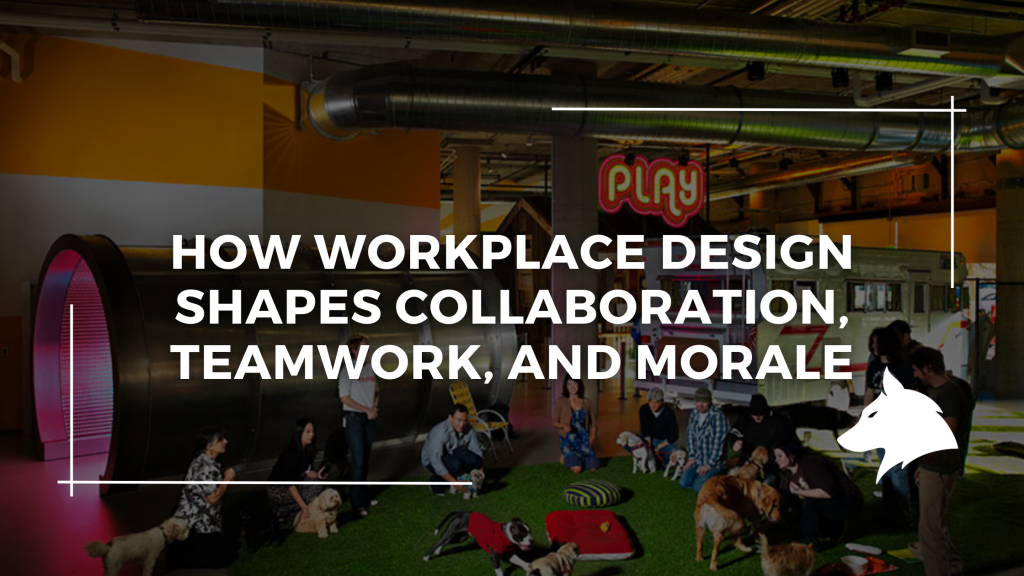Insights from Webber Architects
The design of a workplace is far more than just the arrangement of desks and chairs; it is a powerful tool that can shape collaboration, teamwork, and morale. Kristine Piggford from Webber Architects shared her expertise on this topic in a recent interview, offering valuable insights into how thoughtful architectural design can transform workplace culture and dynamics.
Kristine’s Experience: Designing for Connection and Wellness
Kristine emphasised how workplace design can profoundly influence employee mood and engagement. Reflecting on one of her favourite projects—a major renovation for local government—she described the transformative impact of reconfiguring spaces to prioritise collaboration and wellness. “We have completely reconfigured the spaces and flipped the buildings,” she explained. “The executive and leadership team were previously on the top floor with expansive views. We reallocated this space to communal staff gathering areas to bring teams together for collaboration and social interaction.” This strategic shift not only improved teamwork but also fostered a sense of belonging among employees.
Kristine also highlighted the importance of creating quiet rooms and collaboration spaces, noting their popularity in the renovated offices. “Having created these quiet focus spaces in the first stage, the client has requested more of these spaces due to their popularity,” she shared. By addressing both individual focus needs and collaborative opportunities, Webber Architects demonstrated how adaptable design can elevate workplace culture.
Favourite Projects: Transforming Workspaces for Modern Needs
One standout project involved revitalising four interconnected administration buildings across five levels. The existing space was outdated and misaligned with contemporary working styles. Post-COVID challenges made it difficult to bring staff back to the office, but Webber Architects’ innovative approach turned these obstacles into opportunities. Materials, finishes, and colours were carefully chosen to enhance staff wellness, improve wayfinding, and create a welcoming environment that encouraged interaction.
Kristine’s passion for this project was evident as she described the client’s excitement about the cultural shift within their organisation. “The interaction with the client and the significant changes to staff culture have been really exciting,” she said. This success underscores how thoughtful design can inspire collaboration while boosting morale.
Unique Workplace Designs: Collaboration at the Core
Webber Architects’ approach to architecture prioritises teamwork and company culture at every stage. Kristine explained, “Architecture and design are collaborative. It takes a whole team of people with different skills, all working together, to see our designs built.” This philosophy extends to their workplace designs, which incorporate features like open-plan areas for spontaneous collaboration, quiet zones for focused work, and adaptable furniture for flexibility.
Natural light, biophilic elements such as plants, and ergonomic furniture are also central to their designs. These features not only enhance employee well-being but also create environments where creativity and innovation can thrive. Kristine noted that integrating natural materials and calming colours helps reduce stress while fostering productivity.
The Role of Effective Workplace Design in Team Dynamics: A Premier Team Building Perspective
At Premier Team Building, we’ve seen firsthand how effective workplace design can amplify leadership, teamwork, and collaboration. One standout example is our experience running multiple team building events for Google at their Sydney office—a space meticulously designed with collaboration in mind.
Google’s Sydney office combines open-plan layouts with designated zones for focused work, fostering an environment where teams can seamlessly transition between brainstorming sessions and individual tasks. The inclusion of breakout areas encourages spontaneous interactions—those casual conversations that often spark innovation. As we facilitated team building activities in this dynamic setting, it became clear how much the physical environment supported our efforts to strengthen team cohesion.
The thoughtful integration of natural light, ergonomic furniture, and biophilic elements created an energising atmosphere that kept participants engaged throughout our events. From leadership workshops to problem-solving challenges, Google’s workspace allowed us to connect with teams on a deeper level by leveraging its design to enhance communication and creativity.
This experience underscores a critical point: workplace design isn’t just about aesthetics—it’s about creating environments where teams can thrive together. Whether you’re hosting team building events or fostering day-to-day collaboration, investing in purposeful design is an investment in your people.
During a time where many employers struggled to get their teams back into the office, the Google Team told us how many of them would choose to work more from the office than at home. They were offered the option for a blended work setup, but chose to be in person, collaborating with the team. It was clear to see how the environment drove this decision.
Learn More About Webber Architects
Webber Architects’ commitment to creating workplaces that inspire collaboration and improve morale is evident in every project they undertake. If you’re looking to transform your office into a space that promotes teamwork, innovation, and wellness, visit their website at www.webberarchitects.com. You can also follow them on Instagram (@webberarchitects) or LinkedIn for updates on their latest projects.
Whether you’re seeking advice or ready to embark on your own workplace transformation journey, Webber Architects offers expertise that blends creativity with functionality—helping businesses build environments where teams can truly thrive.
Investing In Your Team’s Success
If you’re unsure of where to start, or what would be the most suitable event or workshop for you and your team, take a few moments and complete our free team assessment quiz. This will allow us to point you in the right direction and make a meaningful impact to your team and workplace culture


